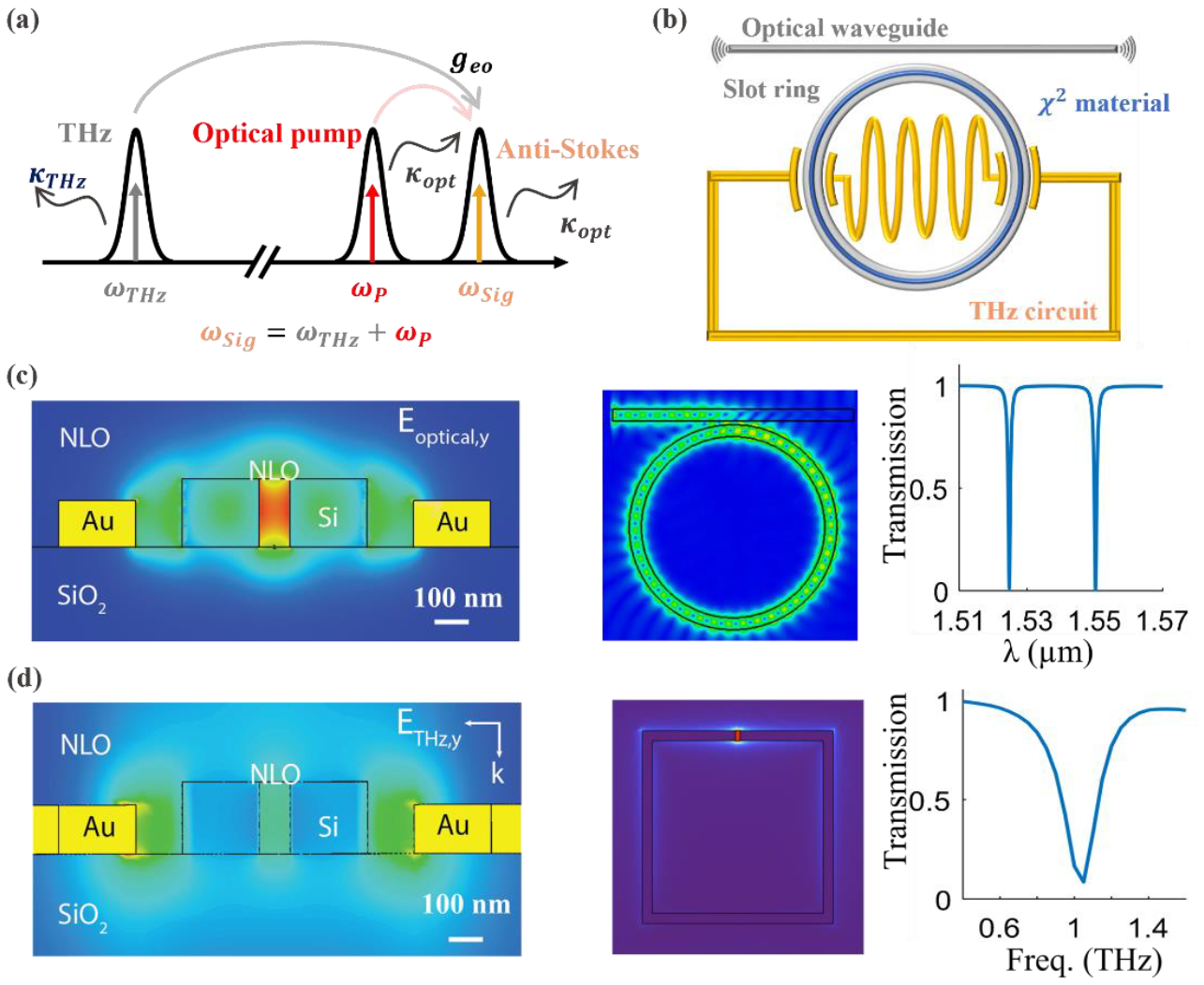| PREVIOUS PRESENTATION | BACK TO PROGRAM OVERVIEW | NEXT PRESENTATION |
Silicon-organic integrated photonics for THz sensing
Jiawen Liu, Francesco Bertot, Ileana-Cristina Benea Chelmus
Laboratory of Hybrid Photonics, École Polytechnique Fédérale de Lausanne (EPFL), Switzerland
Silicon-organic hybrid integrated photonic circuits have recently shown unprecedented capabilities for the on-chip electro-optic (EO) detection and generation of terahertz (THz) waves [1,2]. In this work, we propose integrated photonic chips for the sensing and manipulation of THz signals. We anticipate the implementation of THz-optic frequency conversion [3,4], which also empowers the fast, sensitive and chip-scale THz sensors that currently remain technically challenging and hinder applications such as wireless communications, light detection and ranging systems. Our methods involve cavity electro-optics, combining optical ring resonators and THz LC circuits for the optimization of the nonlinear interaction between THz fields and an on-chip near-infrared probe beam on a nonlinear optical material on a silicon-on-insulator (SOI) platform.

Figure 1. (a) Conception of THz-optic frequency conversion using cavity electro-optics. (b) An example of realistic design that combines an optical ring resonator and a THz LC resonator to confine simultaneously two different frequency onto 𝜒2 polymers for wave mixing. (c) and (d): simulations of silicon-organic hybrid system that enables efficient nonlinear process. (c) simulations of optical field. (d) simulations of THz field.
The ultimate goal of this research is to create a quantum photonic chip with unparalleled frequency conversion efficiency reach the quantum limit. To achieve this, we seamlessly integrate sub-THz superconducting circuits onto the photonic chip to mitigate losses, a significant limitation for high-frequency devices. This combination results in a quantum chip that can function as a single photon sensor or transceiver, serving as a fundamental building block for future quantum technology in the sub-THz domain.
References
[1] I.-C. Benea-Chelmus, et al., Optica 7, 498-505 (2020)
[2] Herter, A., et al., Nat. Commun. 14, 11 (2023)
[3] L. Fan, et al., Sci. Adv. 4, eaar4994 (2018)
[4] Y. Xu, et al., Nat. Commun. 12, 4453 (2021)
